
I have a newborn child, which means I’ve been doing a lot of driving her around at night during the screaming hours. My mom accompanied me on one of those recent drives, and we got to talking about coffee. “People ask me all the time, ‘What coffee maker should I get? Do I really need a grinder?’ And I have no clue what to tell them.” I can sympathize with my mother—people ask us stuff like this all the time too.
“Because they know you write about coffee, they think I have the answers,” she went on. “You should write something for me to give them next time.”
Well, mom, here it is.
This is a guide for anyone who wants to up their coffee game with practical, useful advice for brewing at home. Coffee has seen a great deal of advancement in technology and culture over the last ten or so years, and happily there is now much better gear out there than a Mr. Coffee or a K-Cup machine. Best of all, none of it has to be expensive.
Think of coffee as being kind of like baking: precise measurements are super important, and you need a few crucial tools to do the job. You wouldn’t try and fix up a beautiful layer cake in an E-Z Bake Oven, and drinking crummy pod roast or brewing on a Mr. Coffee is pretty much the same thing.
Whether you’ve been drinking coffee for 5 years or 50, it’s never been a better time to love delicious coffee than right now. Making coffee at home is a ritual; it’s fuel for the day; a little cup of sanity to keep you on the right path. It can also be a delicious culinary joy—here’s all you need.
A quick note on pricing: prices in this guide are based on Amazon pricing in December, 2016. Some of the gear in this guide will fluctuate in price.
Essential Gear
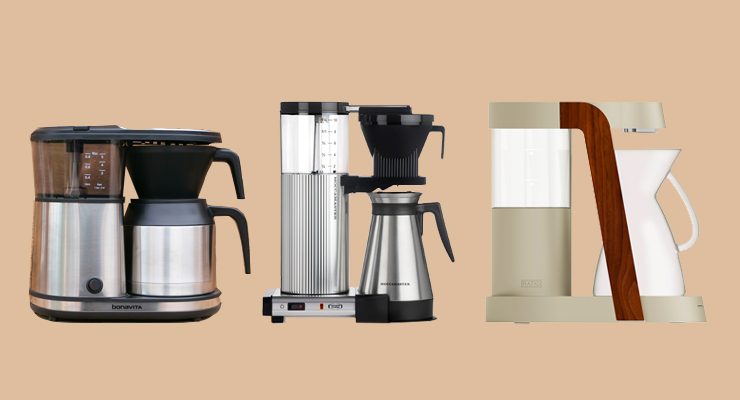
An Automatic Coffee Maker
There are many, many options on the market for automatic coffee makers, from the aforementioned pod machines and Mr. Coffees, all the way up to deluxe luxury models that promise to grind your beans, set a morning alarm, clean your house, and travel back in time. In general you want to avoid combo machines that include a grinder—they are impossible to clean (more on that later) and don’t measure up when it comes to cup quality.
Heaps of research on water dispersement and temperature stability have gone on in the coffee industry over the last decade, and automatic coffee drippers (sometimes called “batch brew” by industry types) are enjoying a resurgence of respectability at the cafe level. If you are a lover of home automatic coffee brewers, right now is a great time to be alive. For what it’s worth I love making batch brewed coffee at home because it’s so simple, and lets me get on with my day—I’m drinking some right now as I type these words.
A fine entry-level machine for brewing coffee at home is the Bonavita 8 Cup coffeemaker. It is a workhorse without bells and whistles, brewing a consistent cup of daily coffee while taking up minimal counter space. If you want to go up a level, the 10-Cup Technivorm Moccamaster
is a Dutch home brewer that effortlessly fuses form and function: it brews a simple, delicious, repeatable pot of coffee, and looks good doing it. Prices range from $219 to $349 for various models, and it is available in a rainbow of colors. (I bought my wife a pastel pink one for her birthday
a few years ago and it was very popular.) Last, if you’re looking for something a bit more bespoke, the Ratio Coffeemaker is both a reliable everyday brewer and a conversation piece for the modern kitchen, hand assembled in Portland, Oregon and available with custom wood options. It begins at $595.
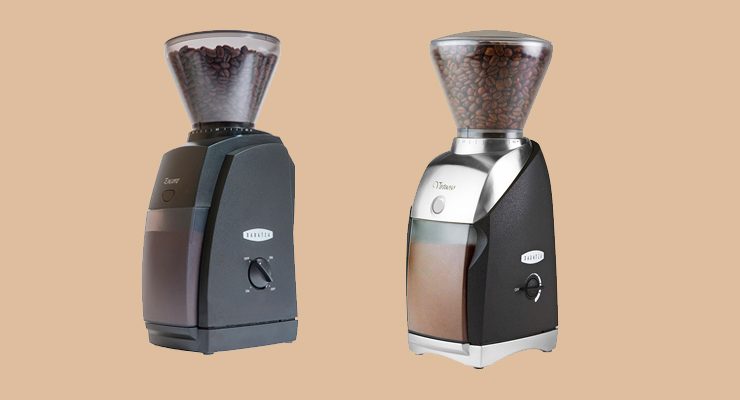
A Sensible Burr Grinder
Many of us grew up with a flat blade grinder in our home, but in recent years new strides in understanding coffee quality have really come to emphasize the importance of using a burr grinder, in which two abrasive pieces of metal (burrs) are set next to each other to grind coffee beans in a uniform fashion. Uniformity is key, because that means your coffee grounds will be a consistent size, which means they’ll interact with hot water better and make for a more delicious cup of coffee. If you want to learn more about why this is important, check out this easy to understand article from food website The Kitchn.
You may think to yourself: “If I just buy the nice coffee maker, maybe I don’t need a new grinder? My blade grinder still works…” — but if you take one piece of advice from this guide, let it be this one: you need a burr grinder. It is arguably the most important piece of equipment in the home coffee kitchen. Just trust me here.
Baratza is the gold standard name in home coffee grinders, and you’ll find them in the home kitchens of both coffee professionals and casual coffee drinkers. Their base level grinder, the Baratza Encore, starts at around $129 online. There are some quirks to this machine—it’s kind of loud, and its little dial arm handle is wont to pop off—but it does the job and isn’t expensive. Baratza offers a number of levels up from there, including their Virtuoso
grinder with more adjustability, starting at around $229, all the way up to models with digital interfaces that can handle grinding espresso. But for our purposes—brewing a nice cup of coffee at home—the Encore or the Virtuoso are the droids you are looking for.
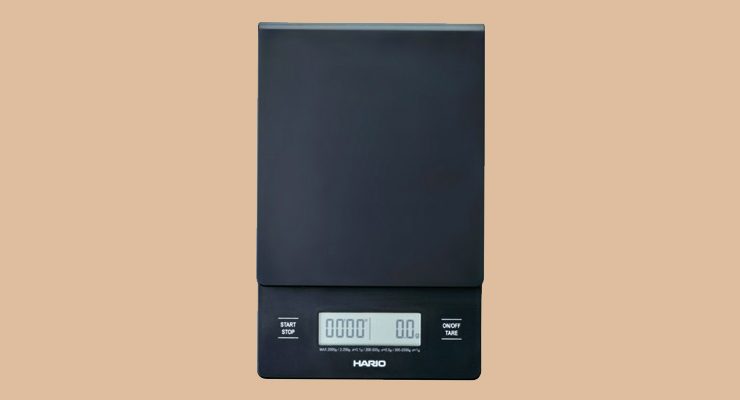
A Small Digital Scale
This is one I’ve argued about before with family members, but trust me, 10 out of 10 coffee dorks agree: you need a small digital scale as part of this home brewing setup. Just hear me out: we agree that coffee is like baking, right? Measurement and equipment are incredibly important, and you won’t know if you got the recipe right until you taste it at the end. Using a scale helps you follow a basic recipe (60 grams of coffee to one liter of water should do it) and no, a scoop that roughly measures out grams won’t do it, because different coffees have different weights and aren’t a uniform size; it’s not like a cup of flour, where you can level off your measuring cup and have a precise-ish amount. Try leveling off a scoop of beans; you’ll wind up picking them off the floor.
I think there’s kind of a cultural stigma against having a small digital scale in your kitchen, perhaps because it’s the sort of thing you used to only be able to find at a head shop. (Not that you’re going to head shops, or used to go in the 70s). Let me assure you that in today’s day and age there is no druggie stigma against using a scale to measure your beans.
Any sort of kitchen-ready digital portioning scale will work, with several options available at stores like Williams-Sonoma and in the kitchen section at Target. For a coffee-focused option that also offers a built-in timer, the Hario Drip Scale is small, sleek, and useful. For a little bit more, check out the scales being made by Acaia Coffee—their design is reminiscent of Apple computer products with lots of digital functionality, and they start at around $129.
A Pack Of Paper Filters
Your automatic coffee maker will need to be fitted with a paper filter for each use. There are, you guessed it, dozens of options to choose from, but for this step I think it’s fine to simplify. Melitta Coffee Filters can be bought in most grocery stories in America, and they work just fine. Make sure you get either the flat-bottom basket
or cone shape
, depending on your machine.
A Gentle Reminder To Clean
Just as a set of kitchen knives must be occasionally sharpened to keep their usefulness, so too should you occasionally clean your home coffee maker and grinder. Urnex Brands of White Plains, New York makes a line of cleaners that have become an industry standard in busy cafes and bars but should be in the cleaning cabinet of any coffee lover at home. Pick up a pack of their Grindz grinder cleaner and Tabz
equipment cleaner. If you take the time to clean your gear once a month or so, your coffee really will taste better.
A Little Bit More Gear
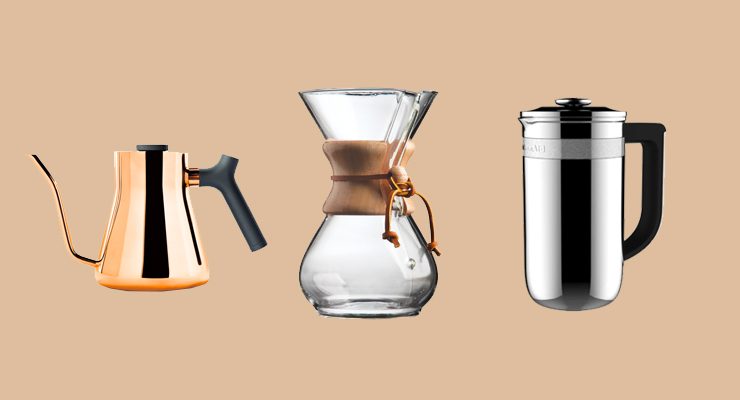
What I’ve recommended above—a brewer, a grinder, a scale, filters, and cleaner—is all you really need to brew great coffee at home. But of course coffee is like anything else; there’s no end to how much you can learn, fiddle, and spend with various upgrades and accoutrements. Without going too deep off the deep end, here are a couple more cool products that might really enhance your home coffee experience.
Consider The Chemex
The Chemex is an American classic, a distinctive coffee brewer featured from James Bond to Mad Men, with a permanent home at the Museum of Modern Art in New York. I think it’s a fantastic addition to any home, and not just for coffee brewing. Alton Brown‘s theory of everything says that no kitchen item should have just one purpose, and in this way the Chemex shines: it brews a tasty cup of coffee, but it also doubles as a beautiful flower vase, wine decanter, or centerpiece.
A brand new 6-Cup Chemex starts at around $40 online. Because of its unique shape, you’ll need to buy some Chemex-specific filters
. My hot tip is to put the Chemex on your discovery list for trips to the antique store, especially if you like shops that specialize in mid-century modern decor. I’ve been lucky enough to discover 50+-year-old Chemex coffee makers for sale at very reasonable prices in antique stores.
Some Like To Press
French Press coffee is delicious, and carries with it many happy connotations of weekend mornings, sipping coffee on the patio with a stack of newspapers (or an iPad, I suppose). For many years Bodum has made an entry-level French press option that does what it says on the box and runs around $20, but happily there have been some advancements in this field over the last few years. Espro of Canada makes handsome glass and stainless steel presses that minimize mess and clean-up, and come in a variety of sizes, from $35 to $119. And KitchenAid, the venerable American home products brand, has drawn rave reviews for their new Precision Press, a French press with an integrated scale and timer.
Test Your Kettle
It may seem like overkill, but some coffee lovers swear that you need a specially purposed hot water kettle for brewing the perfect cup. This is especially important if you’re going to dive into the world of the Chemex, or want to play with other pour-over coffee makers like the ones made by Hario, Kalita, or Blue Bottle.
Here’s why I love coffee kettles: they are beautiful, unique pieces of home kitchen equipment that help impart a sense of ritual and specialness to the coffee making process. The most distinguishing feature of a coffee kettle is the “gooseneck” design of its spout, which gives the pourer extra control over the pouring process. Many of the best pouring kettle brands come from Japan, with lovely offerings from brands like Hario ($35), Takahiro
($90), and Kalita
($75). For a bit more functionality, the Bonavita Variable Temperature Kettle
($89) allows you to dial in the temperature you’d like your water to be, and then “hold” that temperature between brews. Or if you’re after a really beautiful piece for your home, consider the gorgeous Stagg Kettle
(starts at $69) from San Francisco’s Fellow Products in matte black, stainless steel, or copper.
For The Love Of Coffee
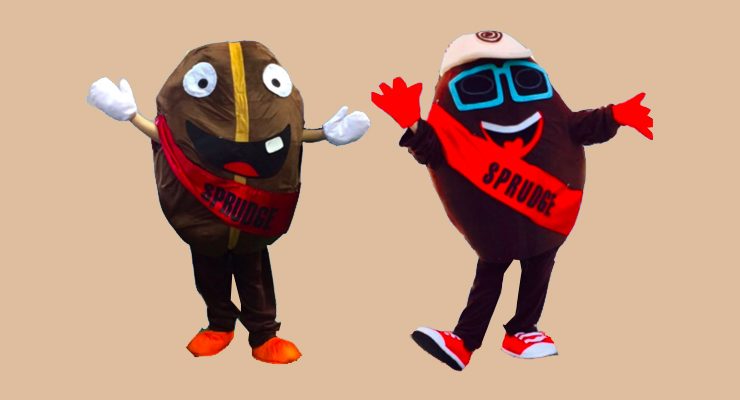
There is, of course, one more product you need to make delicious coffee at home, and that is delicious coffee. Here is where your preferences really come into play, and if you’re already loyal to a coffee brand, feel free to stick by them—it’ll taste better than ever through your nice new (regularly cleaned!) brewer and grinder combo. If you want to branch out and try some new stuff, Sprudge is proudly partnered with a number of the world’s best coffee roasting companies, offering a kaleidoscope of flavors and roasting styles from around the world—feel free to click some links from our sponsor roll running along the right hand side of this article.
You might even consider a subscription service, so that fresh coffee can be delivered regularly to your home; there are a number of companies that excel at this, none moreso than our nominees for Best Subscription Service in the annual Sprudgie Awards (it’s like the Oscars for coffee). A number of roasters also offer their own recurring subscription services, with some of the best coming from folks like Counter Culture Coffee, Blue Bottle Coffee, and Verve Coffee Roasters.
Ultimately it comes down to you, and the kind of coffee you dig. But buying from ethically minded, quality-focused coffee companies should always be your goal. This, perhaps more than any other reason besides flavor, is one of the major benefits of drinking delicious coffee that doesn’t come in a K-Cup or a pod. You can drink coffee that helps make the world a more sustainable, ethical place—and what could taste better than that?
Jordan Michelman is a co-founder at Sprudge Media Network. Read more Jordan Michelman on Sprudge.
 Sprudge Media Network advertising partners are mentioned in this article. A complete list of partners is listed on the right hand side of this and every Sprudge feature. Sprudge is a participant in the Amazon Services LLC Associates Program, an affiliate advertising program designed to provide a means for sites to earn advertising fees by advertising and linking to Amazon.com.
Sprudge Media Network advertising partners are mentioned in this article. A complete list of partners is listed on the right hand side of this and every Sprudge feature. Sprudge is a participant in the Amazon Services LLC Associates Program, an affiliate advertising program designed to provide a means for sites to earn advertising fees by advertising and linking to Amazon.com.
The post The Only Coffee Guide You Really Need appeared first on Sprudge.

